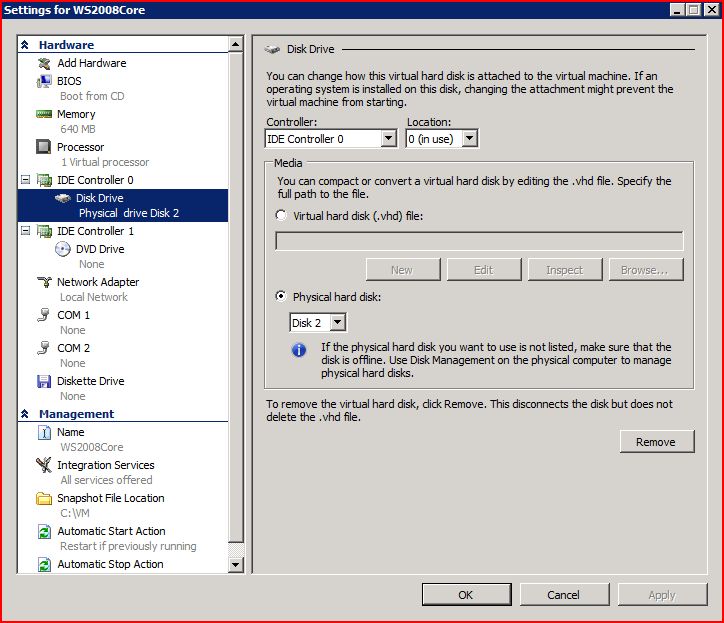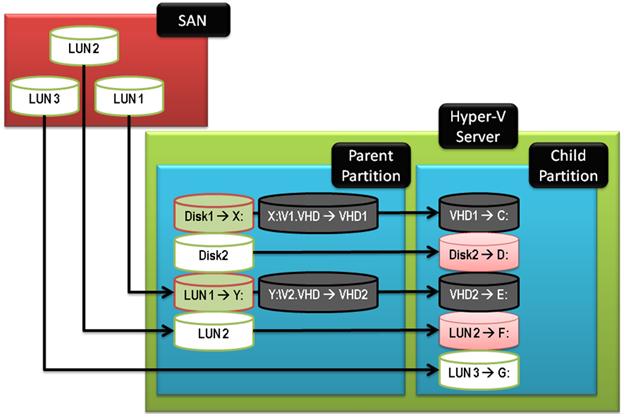More on Storage Options for Windows Server 2008 Hyper-V
As I mentioned in a previous blog post, you can expose storage to a Hyper-V guest in many different ways.
After getting some feedback to that initial post, there are two frequent comments that I wanted to address.
You can boot a Hyper-V guest from an iSCSI LUN
I wanted to highlight that you can boot a Hyper-V child partition (guest) from an iSCSI LUN. To do that, you need to expose that LUN to the parent partition (host), make sure the LUN is set as an offline disk in the host and then use the passthrough option to expose the disk to the guest as IDE (ATA).
With that, you can successfully boot a Hyper-V guest from an iSCSI LUN. In fact, that works just the same for a fibre-channel LUN or SAS disks.
Here’s what the configuration of that virtual disk would look like:
There are also third-party solutions that will that will allow a Hyper-V guest to boot from an iSCSI LUN exposed directly to the guest. You can check a product from EmBoot that does exactly that at https://www.emboot.com.
How about a picture?
In the blog post, I had a table showing the different storage options, but someone pointed out that a picture would be a lot more useful than a table. So, here it is:
In the picture you see the different ways to expose a disk to a Hyper-V parent partition (host) and child partition (guest):
- C: = Using a VHD file on a directly attached disk (X:) on the host
- D: = Using passthrough to a directly attached disk on the host
- E: = Using a VHD file on a SAN LUN mounted as a volume (Y:) on the host
- F: = Using passthrough to a SAN LUN exposed to the host
- G: = Using an iSCSI LUN exposed directly to the guest
Note that, for the first four options, the disk can be exposed to the guest as either SCSI or IDE (ATA), regardless of the physical disk interface used on the host. Also note that the last of the five options above is only available for iSCSI SANs, not fibre-channel.
For all the details of what you can and cannot do in each scenario, check the original post at:
https://blogs.technet.com/josebda/archive/2008/02/14/storage-options-for-windows-server-2008-s-hyper-v.aspx

